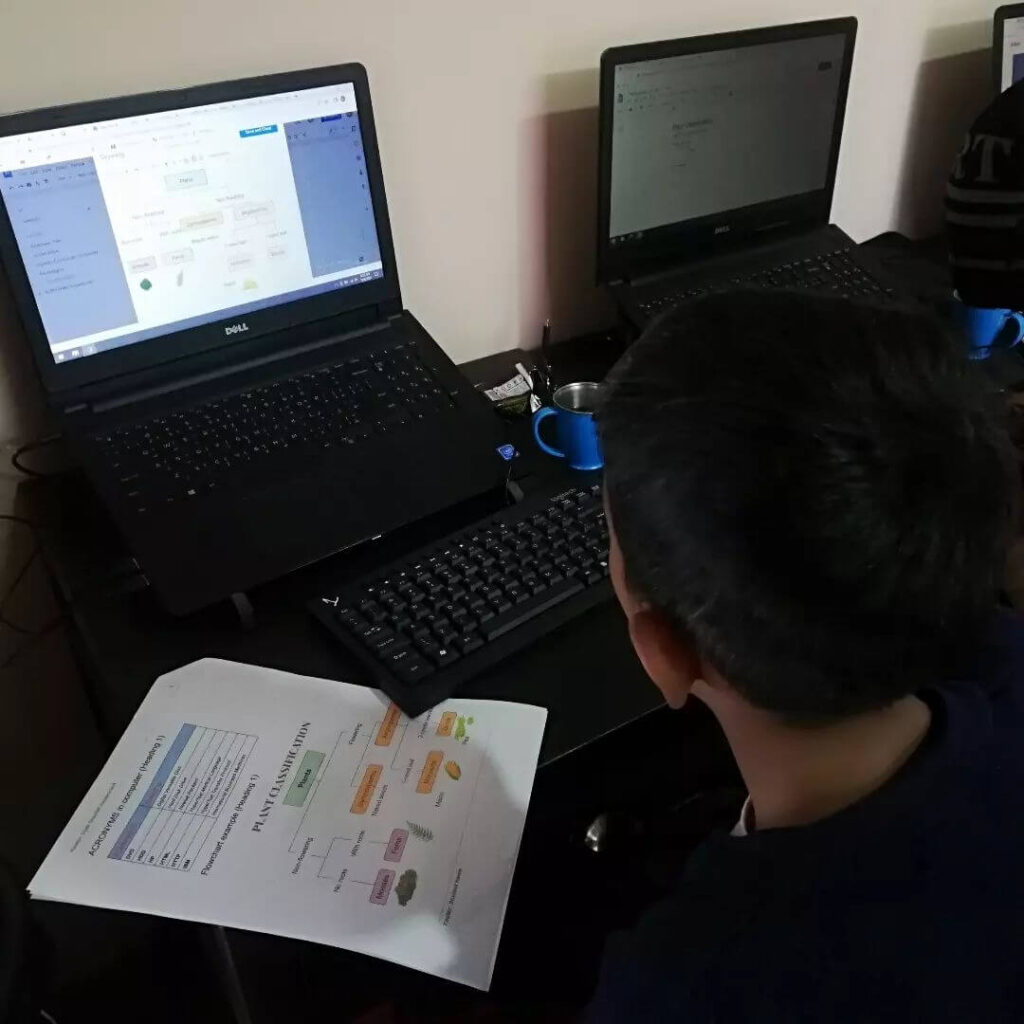Evaluating Student Progress in Computer Literacy: The Importance of Performance Assessment

Recently, the students at Code Chautari Community Learning Center, a community learning center for public school students in Nepal, completed a new unit on the Google Suite tools. The students, who are in grades 5 to 7, learned how to use tools such as Google Drive, Docs, Sheets, Slides, and Forms.
One of the projects that the students completed during this unit was a survey using Forms. They collected data from the survey, linked it to Sheets, and created charts and graphs to visualize the data. They then used Docs to create a sample document of their project, and used this document to create a presentation using Slides.
This project was a great learning experience for the students, as it allowed them to apply their newly acquired computer skills in a real-world context. The students had never used a computer before and had very low command of English, making this task challenging for them. However, by working on the project, the students were able to improve their computer skills and develop important 21st century skills such as critical thinking, problem solving, and collaboration (Cummings et al., 2013).
The use of Google Suite tools also helped them with their English language skills. They were able to use the tools to communicate effectively with their classmates, and teachers. They were able to use the tools in a way that was natural and intuitive for them. They were able to use the tools in a way that they could understand and relate to.
The project also helped students to develop digital literacy skills. They were able to use the digital tools to access information and communicate with others, which is an important skill in today’s digital age. They were able to use the tools to troubleshoot problems and seek out additional information when needed.
In addition to the hands-on project work, the students at Code Chautari Community Learning Center also participated in a performance assessment as part of their computer literacy education. This assessment was conducted using a continuous formative assessment model, which means that the students were assessed on a regular basis throughout the unit, rather than just at the end (Black & Wiliam, 1998).
Performance assessment, also known as authentic assessment, is a type of assessment that measures a student’s ability to apply knowledge and skills in a real-world context, rather than just their ability to recall information (Kirschner, Sweller, & Clark, 2006). It is a form of educational assessment that calls for students to explicitly exhibit their knowledge and skills through the completion of open-ended activities like formulating an answer, creating a project, or carrying out an activity.
The performance assessment helped to evaluate the students’ progress and understanding of the skills and competencies they were learning. This continuous formative assessment model allowed the teachers to identify areas where students were struggling, and provided them with the opportunity to provide targeted support and interventions.
Performance assessments also helped to give the students a clear understanding of what they needed to learn and what they needed to do to improve. This helped to motivate them to take an active role in their learning, and to set realistic goals for themselves. Additionally, the performance assessments helped to build the students’ sense of self-efficacy, which is the belief in one’s ability to succeed in a particular task (Bandura, 1977).
References:
-
- Kirschner, P. A., Sweller, J., & Clark, R. E. (2006). Why minimal guidance during instruction does not work: An analysis of the failure of constructivist, discovery, problem-based, experiential, and inquiry-based teaching. Educational psychologist, 41(2), 75-86.
- Cummings, J., McClarty, K., & Rusch, G. (2013). The case for 21st century learning. Educational Leadership, 70(8), 12-17.
- Black, P., & Wiliam, D. (1998). Inside the black box: Raising standards through classroom assessment. Phi Delta Kappa International. https://doi.org/10.1177/003172171009200119.
- Bates, A. W. (2015). Teaching in a digital age. John Wiley & Sons. https://openlibrary-repo.ecampusontario.ca/jspui/handle/123456789/276.
- Bandura, A. (1977). Self-efficacy: toward a unifying theory of behavioral change. Psychological review, 84(2), 191. https://psycnet.apa.org/doiLanding?doi=10.1037%2F0033-295X.84.2.191.
